Over the past two decades, with the support of the Party and the state, universities have established educational principles integrating curriculum reform, teaching beliefs, and political theories. Despite significant progress in ideological and political theory research, challenges remain that hinder sustainable development. This paper leverages a computerized algorithmic model of complex information networks to explore the intersection of scientific and humanistic approaches in education. By combining these methods, the study provides an optimized knowledge and political model for university education and analyzes its credibility. Empirical results indicate that the proposed model achieves a 91% accuracy rate. The improved model enhances the intellectual and political vitality of university theoretical courses, strengthens educational principles, and ensures the quality of university education.
Despite significant progress, several issues in the current teaching policies of universities cannot be ignored. Some “avant-garde” teachers misunderstand the requirements of curriculum reform, blindly pursuing innovation in teaching forms. They often equate ideological and political activity curricula with students engaging solely in self-study and discussions, without ensuring these activities are internalized into students’ overall quality. As a result, “the educational goal of students’ all-round development does not seem to have been truly achieved.” Conversely, some teachers cling to traditional teaching methods and ideas. In ideological and political teaching, practices such as “lecturing from a book with a piece of chalk” and students “passively memorizing and reciting before exams” remain prevalent [10,7,12,3]. Exploring teaching strategies that align with core literacy training requirements has become an urgent necessity in the context of curriculum reform [9].
Ideology and politics, though seemingly simple, reveal fundamental world laws that are universal in nature and contain an inherent simplicity and beauty. Ideological and political education aims to uphold the knowledge and political standards of university education, fostering morality, training successors for socialist society, and promoting all-round moral, intellectual, and physical development. This includes cultivating core competencies such as political identification, scientific spirit, legal awareness, and public participation [1,11]. On one hand, intelligent computing provides advanced statistical analysis tools for complex information networks, ensuring a deeper understanding of such networks. On the other hand, traditional studies on complex information networks offer theoretical foundations for developing intelligent computing models and algorithms.
However, much of the current research on complex information networks focuses either on their physical characteristics or on their specific applications in certain fields, with limited studies addressing their broader impacts [13,8]. Without the technical support of intelligent computing models and algorithms, research on complex information networks cannot fully realize its potential for intelligent computing and services. The growing demand for intelligent computing models and algorithms highlights the need for an integrated approach that combines these technologies with educational and political theory.
This study formulates an evaluation index system based on the requirements of political and ideological reform and the unique characteristics of universities. By doing so, it aims to enrich educational and political theory, enhance the research outcomes of theoretical education, and offer practical tools to improve scientific, ideological, and political education [4,5,6]. This system can help educators accurately understand the direction of education, diagnose gaps between current practices and reform goals, and develop effective strategies to improve educational outcomes. Additionally, education directors play a critical role in supervising the implementation of teaching reforms to ensure their success.
In summary, evaluating the intellectual and political methods most suitable for university education and their integration with intelligent computing models can provide valuable insights for educators and administrators. These insights can guide decision-making, training, and the improvement of educational practices, helping teachers understand the current educational landscape, students’ learning needs, and the gaps that need to be addressed to achieve reform objectives.
This section summarizes the characteristics of complex networks in the field of intelligent computing, focusing on multivariate parameter optimization and advanced computational methods. The local process of multivariate parameter optimization is expressed in Eq. (1) and Eq. (2):
To enhance efficiency, the reverse transmission training algorithm is combined with the Newton iteration method to derive the steepest descent minimization, as shown in Eq. (3):
In high-dimensional problems, the minimization effect is optimal, as defined in Eq. (4):
Pairing with Eq. (5):
This leads to Eq. (6) through Eq. (8):
The training method, based on weighted Naive Bayesian theory, is expressed in Eq. (9):
Spherical harmonic analysis is calculated using Eq. (10) through Eq. (12):
The three-dimensional discrete Fourier calculation is performed as follows (Eq. 13) through Eq. (15)):
From the perspective of evaluation systems, universities aim to improve knowledge and education policies by defining evaluation objectives, selecting appropriate thematic evaluations, establishing scientific indicator systems, collecting relevant data, and monitoring the effective use of evaluation results. However, these efforts are often carried out in isolation and lack systemic integration [2]. To ensure effective evaluation, support from related systems, such as national legislation, school personnel departments, and teacher salary systems, is necessary. From a sustainable development perspective, it is essential to accelerate legislative evaluation, deepen evaluation theory research, improve evaluation indices, and establish external evaluation mechanisms [14].
A 10-year evaluation model based on network topology is proposed, focusing on centralized evaluations that consider the network structure to assess various aspects of a complex information network. Different evaluation models, such as node correlation, centrality, control evaluation, and heterogeneous fusion models, are analyzed under local network topology. The relationship between these models is shown in Figure 1.
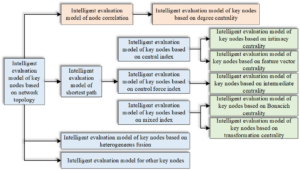
Complex networks integrate intelligent computing models and algorithms. For a 3D model retrieval system, many models contain concave shapes, and the non-uniqueness of extended Gaussian images (EGI) on concave surfaces presents a significant challenge, as shown in Figure 2.

A 3D model retrieval system consists of a database of 3D models, a feature library extracted from these models, program modules for analyzing the geometric features of user input models, a matching module for comparing extracted features with the feature library, and an output module. The structure of a standard 3D model retrieval system is shown in Figure 3.

The true value of ideological and political education lies in helping students develop foundational ideological and political values through teacher guidance, fulfilling the essential task of moral education. However, current ideological and political education often focuses solely on knowledge delivery, neglecting students’ emotions, attitudes, and values. This mismatch between teaching content and processes is expressed in Eq. (16):
Figure 4 illustrates an adaptive atomization system for evaluating ideological and political learning based on a BP neural network.
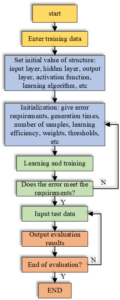
The first three layers correspond to the T-S fuzzy neural network precursor, and the last two layers correspond to its successor network. Each layer’s functions are optimized, as shown in Figure 5.
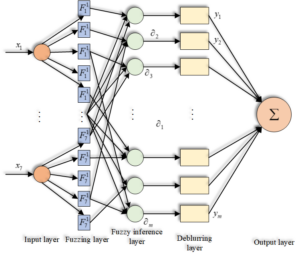
The database for evaluation includes diversified information such as student details, teacher data, and curriculum records. Table 1 outlines the structure of the index boundary value database, while Table 2 presents the structure of the sample database. Table 3 provides the database structure for students’ ideological and political learning evaluation.
| Field Name | Type | Width | Decimal Digits | Remarks |
| Indnum | Character | 2 | – | Index No |
| Indname | Character | 20 | – | Index Name |
| BJ1 | Numerical | 4 | 1 | Excellent and good boundary |
| BJ2 | Numerical | 4 | 1 | Good and medium boundary |
| BJ3 | Numerical | 4 | 1 | Intermediate and pass boundary |
| BJ4 | Numerical | 4 | 1 | Pass and difference boundary |
| Field Name | Type | Width | Remarks |
| swnumber | Character | 6 | Index No |
| onlinetime | Character | 4 | Indicator 1 (Online duration) |
| execrate | Character | 4 | Indicator 2 (Operation completion rate) |
| soutime | Character | 4 | Indicator 3 (Learning resource usage) |
| prosum | Character | 4 | Indicator 4 (Number of initiated questions) |
| anssum | Character | 4 | Indicator 5 (Number of answered questions) |
| aveworkagr | Character | 4 | Indicator 6 (Average operation score) |
| avetestagr | Character | 4 | Indicator 7 (Average test score) |
| evaluationagr | Character | 4 | Comprehensive evaluation grade |
| Field Name | Type | Width | Remarks |
| S_NUM | Character | 10 | Student ID |
| C_NUM | Character | 4 | Course No |
| S_onlinetime | Character | 4 | Learning duration |
| S_exerate | Character | 4 | Operation completion rate |
| S_routine | Character | 4 | Resource usage duration |
| S_prosum | Character | 4 | Number of initiated questions |
| S_assum | Character | 4 | Number of answered questions |
| S_aveworkagr | Character | 4 | Average operation score |
| S_avetestagr | Character | 4 | Average test score |
Hence, education’s ultimate goal is to directly reflect its quality through its impact. The proposed models and evaluation systems provide valuable insights into improving ideological and political education in universities.
To improve the system of knowledge and political progress in scientific construction and education, it is essential to adapt to societal developments. The ideological and political theory courses in China’s higher vocational education must adhere to the principles of Marxist theory, align with the development of socialist society, and reflect the goals of moral education. These courses must evolve with the times, ensuring their relevance and effectiveness.
The ideological, political, and moral development of college students is a complex and iterative process. Teachers must provide consistent guidance throughout the teaching process to facilitate positive development. Building a model path system for university ideological and political education involves leveraging students’ moral and ideological potential and evaluating their developmental trends. Figure 6 illustrates the knowledge and political outcomes of emotion-based learning assessments.
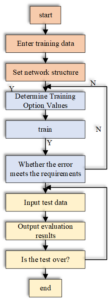
Since sample data comes from diverse sources and categories, subjective factors can influence sample collection, leading to variations in evaluation results. Eliminating outliers is critical to maintaining the integrity of the dataset. Figure 7 shows the optimization steps for constructing an effective sample set of BP networks after removing interference points.

Universities must cultivate theoretical thinking, scientific research abilities, and practical applications of knowledge. However, vocational curriculum research often overlooks the importance of ideological and political theory. Table 4 presents the test results of various datasets to evaluate algorithm performance.
| Dataset | Example | Attribute | Class | Defect | Numerical |
| Anneal | 899 | 38 | 7 | yes | yes |
| Anneal.ORIG | 899 | 38 | 7 | yes | yes |
| Balance-scale | 626 | 6 | 4 | yes | yes |
| Breast-cancer | 287 | 11 | 3 | yes | no |
| Breast-w | 699 | 211 | 3 | yes | no |
| Colic, ORIG | 369 | 29 | 3 | yes | yes |
| Credit-a | 691 | 17 | 3 | no | yes |
| Credit-g | 1000 | 22 | 3 | no | yes |
From the evaluation of teaching methods, classroom atmosphere, and student feedback, it is evident that traditional teaching methods often fail to engage students effectively. Therefore, data simulation is necessary to assess the accuracy of educational models.
Traditional lecture-based teaching reduces classroom interaction and student participation, leading to disengagement. This study employs noise reduction on ANFIS and BP network datasets using a limited multi-view mixed distribution as the optimization path. The experimental results are shown in Figure 8.
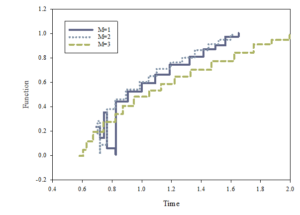
The retrieved data was tested using AI neural networks with continuous weight adjustments to enhance retrieval effectiveness and enable unsupervised learning. Figures 9 and 10 illustrate the optimized flow of theory and political education.
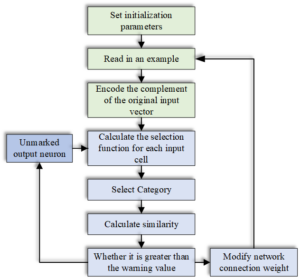
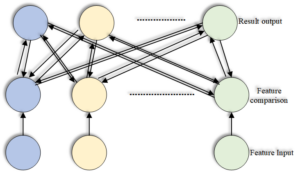
The proposed atomization logic system simplifies into four steps: fuzzification, establishing rule sets, fuzzy reasoning, and defuzzification, as shown in Figure 11.

To enhance reliability, the closed-loop operation mechanism ensures continuous optimization. Figure 12 demonstrates this mechanism, which includes a training and testing loop for ideological and political learning evaluation.
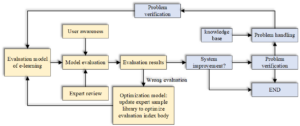
Table 5 and 6 compare test results, highlighting the superior performance of the ANFIS model over BP networks.
| Model | Accuracy | Square Absolute Error | Root Mean Square Error |
| Based on BP Model | 78.18% | 0.0983 | 0.2735 |
| Based on ANFIS Model | 83.27% | 0.0757 | 0.1575 |
| Model | Accuracy | Square Absolute Error | Root Mean Square Error |
| Based on BP Model | 68.57% | 0.1127 | 0.3033 |
| Based on ANFIS Model | 91.43% | 0.0700 | 0.2320 |
The results indicate that emotion-based evaluation models outperform neural network models in assessing educational knowledge and policies. Figures 13 and 14 show the empirical results, aligning with expected assumptions.
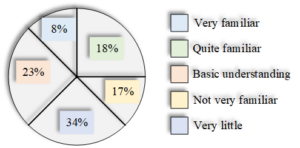
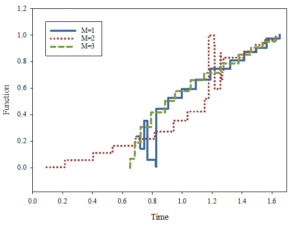
The evaluation of theoretical and political approaches in education remains a critical issue. This study compares two improvement methods, demonstrating the superior reliability and efficiency of the ANFIS model. The accuracy exceeds 91%, and the absolute error is below 0.06, confirming the model’s validity. These findings provide valuable insights for enhancing educational ideology and political theory courses in universities.
1970-2025 CP (Manitoba, Canada) unless otherwise stated.